This collection consists primarily of letters exchanged between Edison and Secretary of the Navy Josephus Daniels, along with related correspondence. Many of the typewritten letters are accompanied by drafts in Edison's hand. The documents in this folder cover the period July-October 1917; there is also one letter from September 1918. They pertain to Edison's work on an oleum smoke bomb that could be used either to hide a merchant ship from enemy submarines or to choke the men inside the submarines. The experiments were conducted aboard the USS Sachem in Long Island Sound. Included is an unfavorable report by the Special Board of Ordnance, which Daniels forwarded to Edison, along with a related report of tests conducted at the Naval Proving Ground in Indian Head, Maryland. Also included is a communication from Miller Reese Hutchison, Edison's chief engineer and assistant on the Naval Consulting Board, advising the inventor to provide more detailed information in his test reports. "These Naval men are accustomed to a full and complete recitation, down to the minutest detail. Unless a report is of this character they are apt to neglect it."
In addition, there is a letter from Edison to William L. Saunders, first vice chairman of the Naval Consulting Board, regarding the oleum tests. The September 1918 letter, written by Adm. Ralph Earle, Chief of the Bureau of Ordnance, invites Edison to test his perfected smoke shells at the Indian Head grounds. There are also numerous photographs [not selected] of smoke tests conducted by both Edison and the Navy. One additional item pertaining to Report 41—an August 30, 1917 letter from Edison's assistant William H. Meadowcroft to Daniels —can be found in the Josephus Daniels Papers—Thomas A. Edison Correspondence, Library of Congress. An acknowledgment of this report can be found in Daniels's letter to Edison, August 1, 1917, in Report 21. The use of oleum-filled shells to blind enemy periscopes or range finders is discussed in Report 33.
This project is described on pp. 177-178 of Lloyd N. Scott's Naval Consulting Board of the United States. A photograph related to this report appears opposite p. 177.
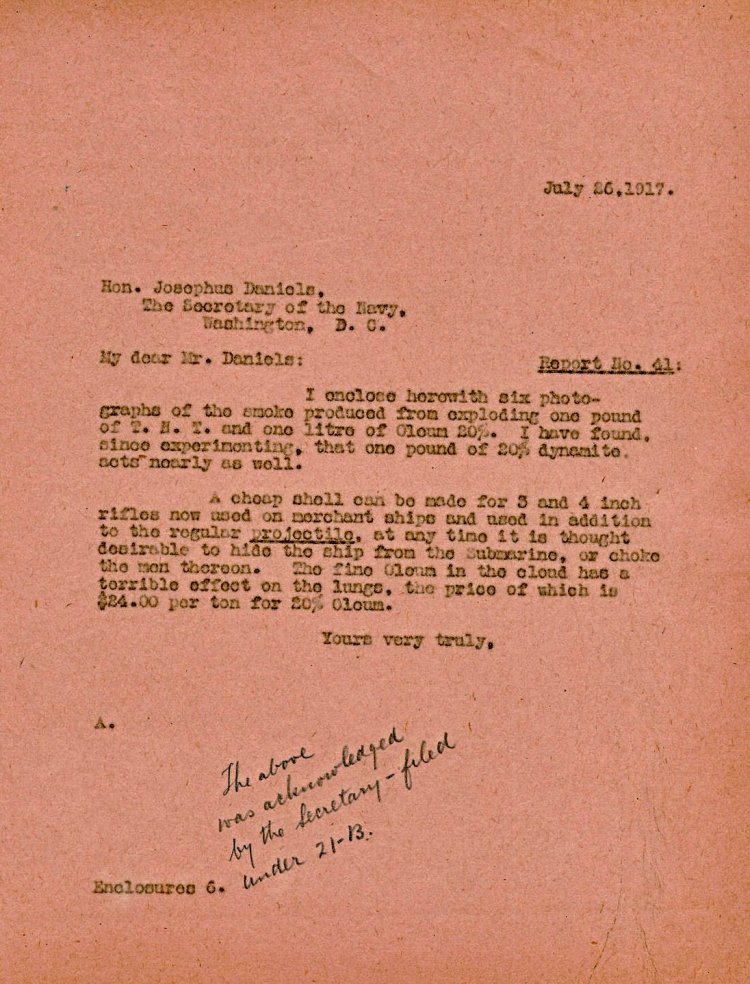 [X128C41A], Letter from Thomas Alva Edison to Josephus Daniels, July 26th, 1917 1917-07-26
[X128C41A], Letter from Thomas Alva Edison to Josephus Daniels, July 26th, 1917 1917-07-26 [X128C41B], Letter from Josephus Daniels to Thomas Alva Edison, July 1917 1917-07-00
[X128C41B], Letter from Josephus Daniels to Thomas Alva Edison, July 1917 1917-07-00 [X128C41C], Letter from Thomas Alva Edison to Josephus Daniels, August 29th, 1917 1917-08-29
[X128C41C], Letter from Thomas Alva Edison to Josephus Daniels, August 29th, 1917 1917-08-29 [X128C41C1], Letter from Frank G Smith to William Henry Meadowcroft, August 30th, 1917 1917-08-30
[X128C41C1], Letter from Frank G Smith to William Henry Meadowcroft, August 30th, 1917 1917-08-30 [X128C41D], Letter from Thomas Alva Edison to Josephus Daniels, August 31st, 1917 1917-08-31
[X128C41D], Letter from Thomas Alva Edison to Josephus Daniels, August 31st, 1917 1917-08-31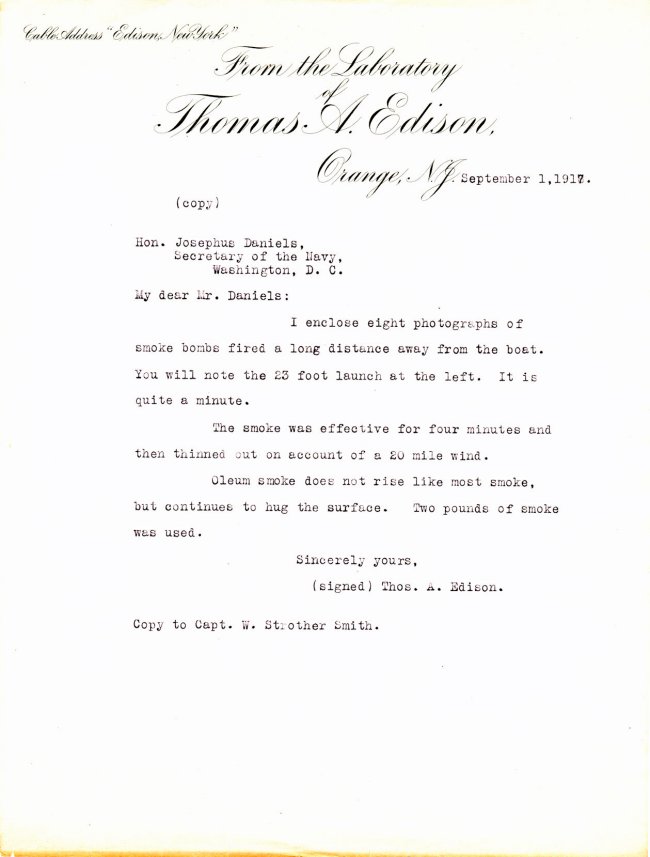 [X128C41E], Letter from Thomas Alva Edison to Josephus Daniels, September 1st, 1917 1917-09-01
[X128C41E], Letter from Thomas Alva Edison to Josephus Daniels, September 1st, 1917 1917-09-01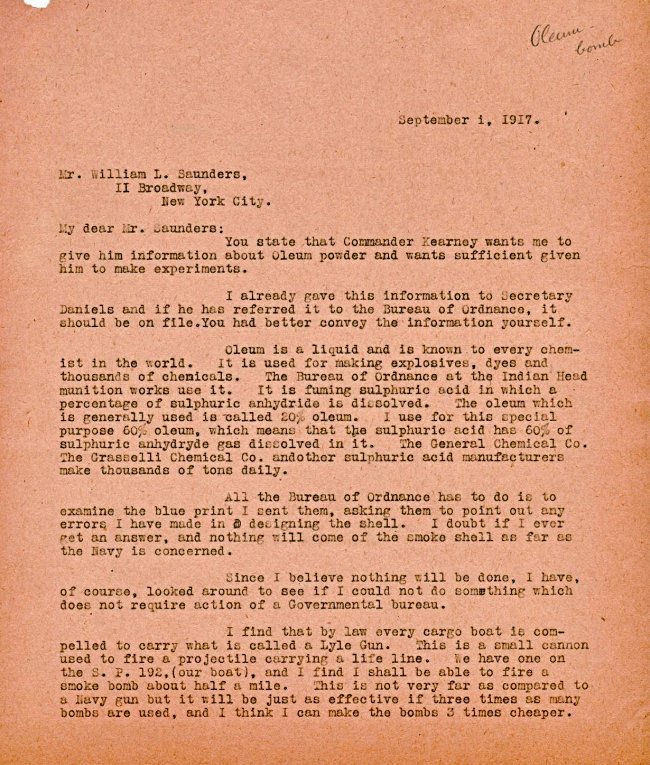 [X128C41F], Letter from Thomas Alva Edison to William Lawrence Saunders, September 1st, 1917 1917-09-01
[X128C41F], Letter from Thomas Alva Edison to William Lawrence Saunders, September 1st, 1917 1917-09-01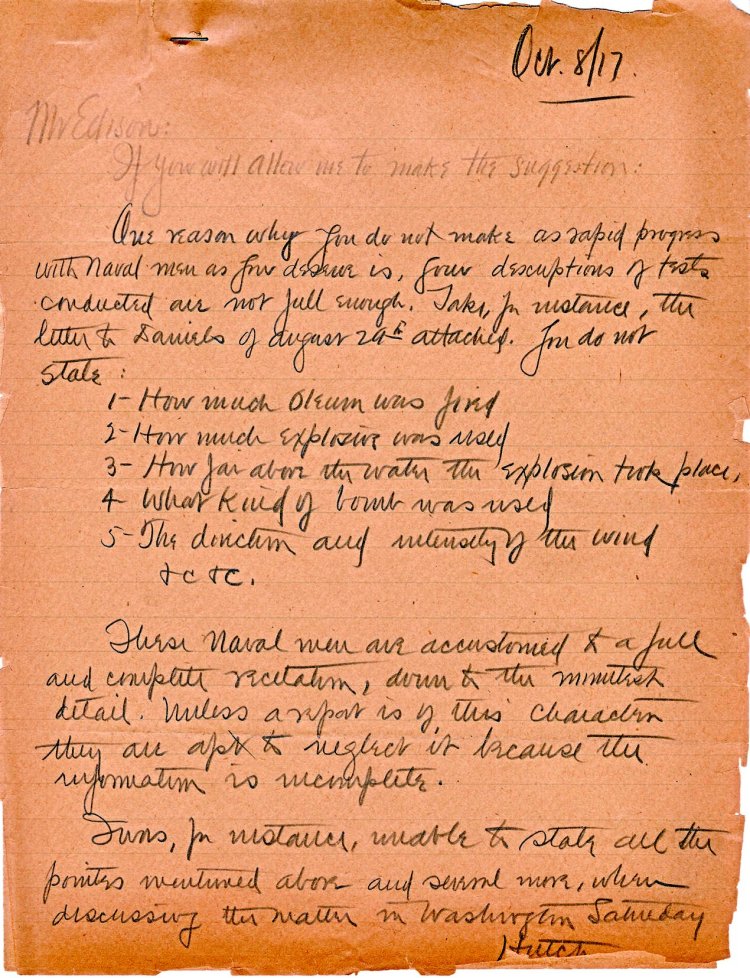 [X128C41G], Letter from Miller Reese Hutchison to Thomas Alva Edison, October 8th, 1917 1917-10-08
[X128C41G], Letter from Miller Reese Hutchison to Thomas Alva Edison, October 8th, 1917 1917-10-08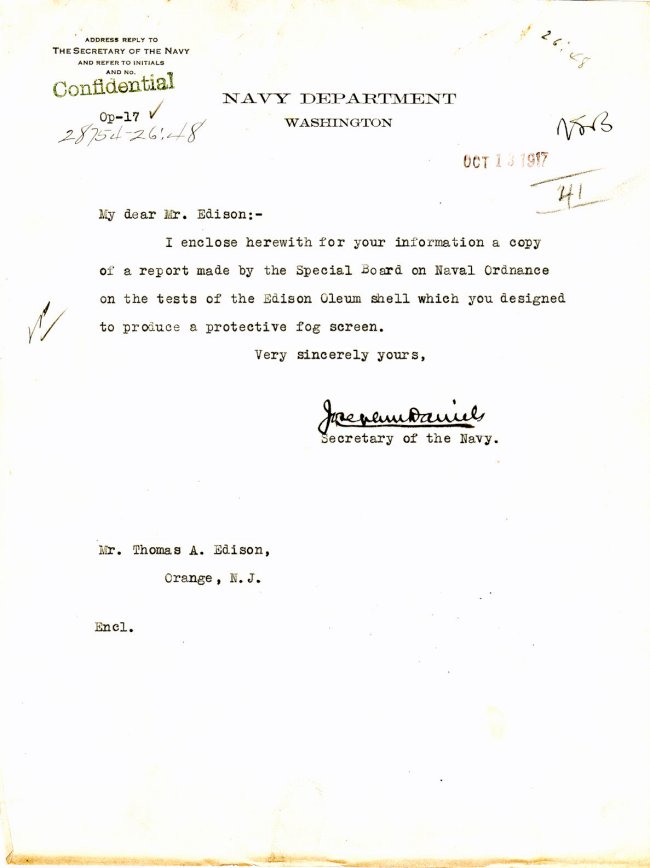 [X128C41H], Letter from Josephus Daniels to Thomas Alva Edison, October 13th, 1917 1917-10-13
[X128C41H], Letter from Josephus Daniels to Thomas Alva Edison, October 13th, 1917 1917-10-13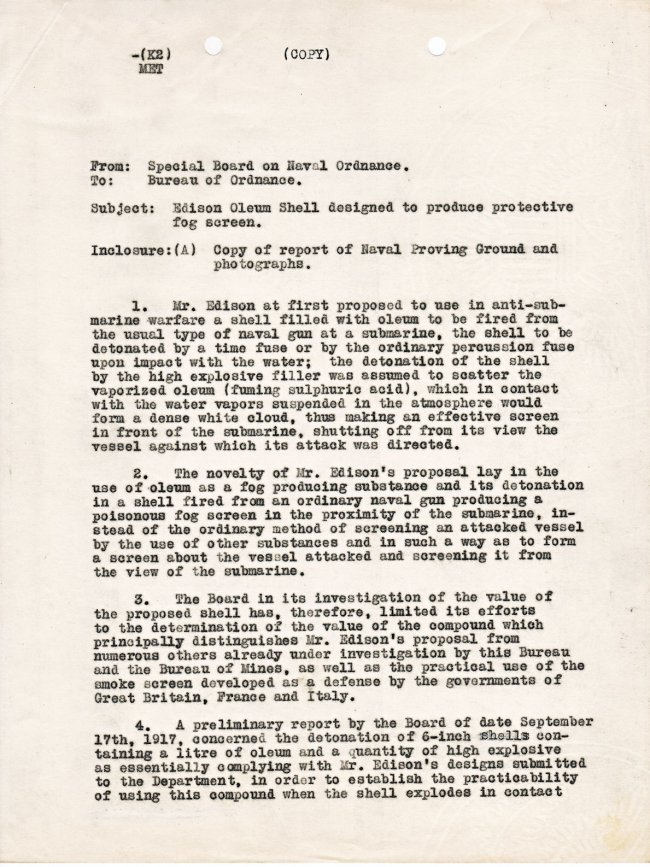 [X128C41I], Letter from U.S. Navy Dept. Special Board on Naval Ordnance to U.S. Navy Dept. Bureau of Ordnance, October 1917 1917-10-00
[X128C41I], Letter from U.S. Navy Dept. Special Board on Naval Ordnance to U.S. Navy Dept. Bureau of Ordnance, October 1917 1917-10-00 [X128C41J], Letter from Ralph Earle, U.S. Navy Dept. Bureau of Ordnance to Thomas Alva Edison, September 7th, 1918 1918-09-07
[X128C41J], Letter from Ralph Earle, U.S. Navy Dept. Bureau of Ordnance to Thomas Alva Edison, September 7th, 1918 1918-09-07